Portable People Meter has changed radio programming. Creating a base station for heavy listeners is what it’s all about now, says American radio strategist Dennis Clark.
Besides sidekicking a rave-reviewed morning show masterclass with Elvis Duran, Clark presented a solo session at the Radio Festival 2011 about building a winning morning show and radio programming strategies for PPM markets. How do listening instances and audience preferences build a base station? And what’s the astonishing effect of stopsets?
Portable People Meter ratings
American radio ratings research company Arbitron introduced Portable People Meter in 2007. “PPM was a game changer”, Clark recalls. “Many listener myths from the diary days were proven to be right – and many of them were proven to be wrong.” Top of mind creation is still very important in PPM markets. Not for yesterday’s recall (when writing in the diary), but for today’s tune-in (when turning on the radio). “You really need to be the first choice of listeners.”
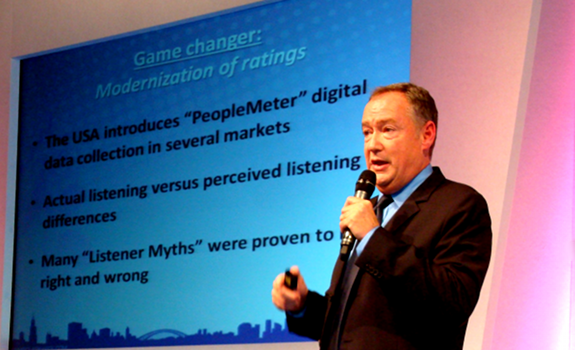
Dennis Clark, Clear Channel Vice President of Talent Development, discussing PPM insights (photo: Thomas Giger)
Different dayparts, different audience
102.7 KIIS-FM has optimized the morning show format clock, using PPM research.“We generalize how people listen during each quarter hour, and then create listener events that match the listener’s routine. We train the audience on how to use our show.” KIIS-FM’s target listener is a young, single working mother. A story about Jessica Simpson being pregnant would be scheduled after 8:30 AM when kids are at school (because they probably won’t know who she is).
“Don’t leave, we’re having cake in five minutes!”
Heavy listeners, base station
“The factual listening has been an incredible and wonderful insight for us. We can see where people tune in, and how often they return to the station”, Dennis Clark says. “In both diary and PPM markets, your station has to be top of mind, and listeners need to know your dial position. People start radio listening with their favorite station.” People who tune in a lot of times during a day, are being called heavy listeners. A station that’s number 1 with heavy listeners, is known as a base station.
Station preference vs. audience behavior
The difference between P1 and PPM is based on opinions (thoughts) vs. facts (actions).
- P1 shows listener preference: what is someone’s favorite radio station?
- PPM shows listener behavior: what radio station(s) does this person actually listen to?
Listening instances vs. station TSL
“Fighting for base station is really, really important. When people turn on the radio, they need to start with you first. It’s up to you not to loose them.” Interesting is that even when people do tune out, it’s not a problem – as long as they come back often enough. A shorter Time Spent Listening may be compensated by many different tune in moments. Therefore in a PPM world it’s about creating occasions (listener instances) to keep people coming back. This teasing can be done on-air, and off-air; through Twitter and facebook.
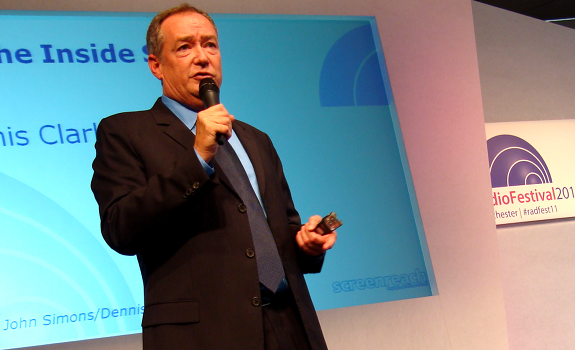
Dennis Clark about program flow: “With every on-air event transition there is a vulnerability” (photo: Thomas Giger)
3 Lessons from PPM
The 3 most important radio programming do’s, based on Portable People Meter findings:
1. Remove bad content
Bad content chases listeners away into the hands of competitors that offer a better product. “We’ve seen minute-by-minute details of our EKG lines going up, and then suddenly stop”, Dennis Clark says. “Then we brought on the logger and learned, that we did a bad interview at the wrong time. It’s a tune-out.” Seeing to which competitor the listeners switched, can also be very helpful: “You can get their logger through the system and see: they were playing Lady GaGa for 4 minutes.”
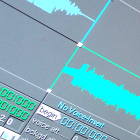 2. Make seamless transitions
2. Make seamless transitions
With every on-air event transition there is a vulnerability, like going from music to spots, or even from song to song. Apart from good and well-testing content (like playing favorite songs), teasing is crucial: “As a song ends, say what’s coming up. Hold people at your party as long as possible: don’t leave, we’re having cake in five minutes!” Think of who has just joined: use one line resets after a song or break to summarize and introduce the topic for them.
3. Create listening addiction
- Remind the audience why they tune in: highlight your content, such as your music, news, contests, benchmarks, and personalities
- Tell listeners how to use your station: make people listen for more minutes right now (“Your chance to win tickets for Katy Perry coming up in ten minutes”)
- Tease people to tune in tomorrow or later: create future tune-in occasions (“Listen tomorrow morning at 7:20 for your next chance to win”)
“It was an amazing kind of cycling through of listeners”
Commercial stopsets ‘reset’ audience
What insights did PPM provide about commercial breaks? Dennis Clark: “We do lose people at commercials, but it’s funny how and when.” He mentions the case of a country station in Atlanta (most likely 94.9 The Bull) that had a 6-minute commercial stopset. “We lost one hundred percent of our PPM users, but within that break, that number was back by a whole new batch of users waiting for what’s next.” Conclusion: stopsets turn listeners away, but also keep (new) people listening if you give them a reason to.
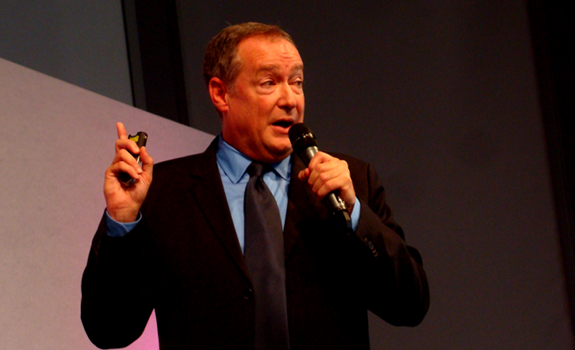
Dennis Clark: “We’ve shorted many of our commercial breaks in certain quarter hours” (photo: Thomas Giger)
Protecting quarter hour shares
This station trained its audience that at the end of the break there’s a Music City Minute. Therefore people knew consciously or subconsciously that they had to come back during the commercial break. “It was an amazing kind of cycling through of listeners”. PPM ratings offer a great insight in the listener’s attention span. According to Clark, this analysis changed the way they lay down commercial loads and schedule spots. “We’ve shorted many of our commercial breaks in certain quarter hours.”
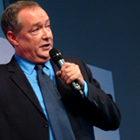 About
About
Dennis Clark is an American radio strategist. He is specialized in (morning show) radio production and on-air talent coaching. Clark works with nationally syndicated personalities like Ryan Seacrest of 102.7 KIIS FM Los Angeles and Elvis Duran of Z100 New York. Recently, he’s been promoted to Vice President of Talent Development within Clear Channels new National Programming Platforms division. He can be followed @1DennisClark.
Read also:
- Elvis Duran About Personality Radio: “Let It All Out”
- Dave Foxx Z100: How To Schedule Promos & Spots
- Listener Expectations Influence Ratings
Stay tuned, follow us: @RadioILOVEIT





Add Your Comment